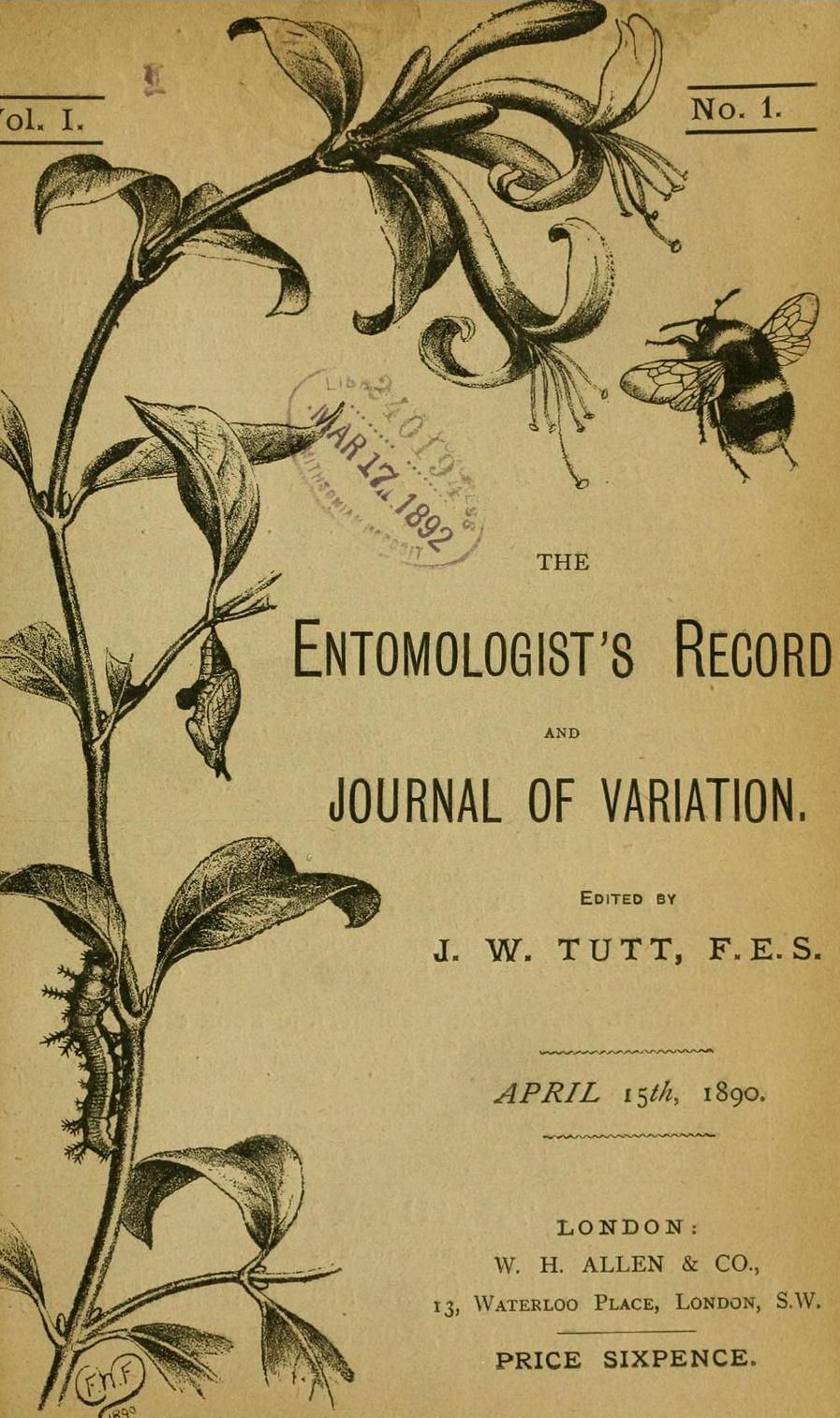The Entomologist's Record and Journal of Variation (1890-)

Title page of the very first number of the Entomologist's Record
In 1890, a schoolmaster and lepidopterist named James William Tutt (1858-1911) established a periodical intended to 'supply a magazine devoted entirely to the wants of British entomologists'. According to Tutt, the two other existing periodicals, the Entomologist and the Entomologist's Monthly Magazine, contained far too much on foreign species that had no real use or application for the those whose collecting was limited to Britain. The Record allowed short notices in which entomologists exchanged information regarding their fieldwork, much in the same manner as they would through private correspondence. Tutt made this comparison explicit, claiming that much of the most important things he had learnt from others had been communicated 'in a casual way' through letters.

A coloured plate from volume 4 of the Entomologist's Record (1893), showing the varieties of some British Lepidoptera
Tutt himself was a bullish character, and his forthright manner did not endear him to some. He was dedicated to a thoroughly scientific and biological approach to entomology, and the Entomologist's Record reflects this. The very title of the periodical points to major shifts in the life sciences, particularly when compared to an earlier publication such as the Entomologist's Weekly Intelligencer (1856-61). While correspondents to the latter periodical had openly mocked Charles Darwin's Origin of Species when it was published in 1859, the Entomologist's Record was expressly intended to allow collectors to share information regarding the variations within species that form the basis of evolutionary theory. Much of the work done by entomologists during the nineteenth century was primarily concerned with the classification of species, determining and delineating the differences between insects and sorting them accordingly. This task was not a simple one, as insects exist in a multitude of forms that defy any attempt to arrange them into a satisfactory system. As much of this process was carried out through the study of dead and dried specimens, far less attention was given to the insect as a living organism. Furthermore, the question of how such a profusion of variation had come about was considered by many naturalists to be beyond the bounds of reasonable speculation. However, by the 1890s, a new generation of entomologists were seeking to address this issue, taking up the theories of Darwin and Alfred Russel Wallace, and placing a greater focus on understanding the physiology of insects.
The best illustration of this shift in emphasis is supplied by Tutt himself, who is perhaps best known today as among the first entomologists to observe and speculate as to the cause of industrial melanism that occurred in the peppered moth, which has become one of the most celebrated (and controversial) examples of natural selection. Moths of this species were observed to be of a darker colour in certain localities, and it was in the Entomologist's Record that the implications of this difference were first seriously considered by Tutt and his peers. Various solutions to the question were suggested, including differences in climate or diet, but it is now considered to be the result of air pollution. The peppered moth had evolved to be light in colour, in order to be camouflaged against the lichens growing on the bark of trees, but the industrialisation of the nineteenth-century led to a decline in air quality, killing off much of the lichen and staining the tree trunks with soot. Within the affected areas, the moths adapted through natural selection to become almost black in colour, thereby ensuring greater protection from predators. The Entomologist's Record and those who contributed to it were therefore key players in this now-famous discovery.
The distinctive cover image of the Entomologist's Record was produced by Frederick William Frohawk (1861-1946), who became a distinguished entomologist and zoological artist. The Record continues to be published, and only recently ceased to use this illustration.

Lighter and darker varieties of the peppered moth, from Richard South's Moths of the British Isles (1907-09)



